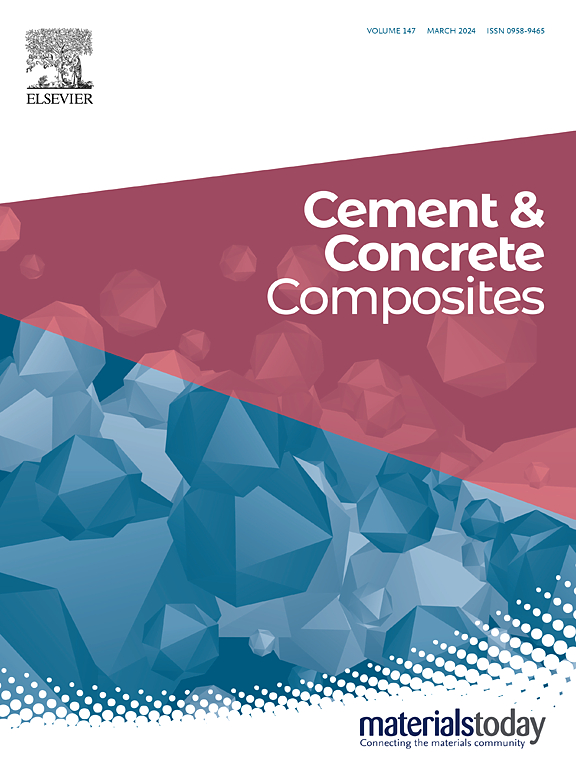Breaking strength-ductility trade-off dilemma for Engineered Cementitious Composites (ECC) through filler effect
IF 13.1
1区 工程技术
Q1 CONSTRUCTION & BUILDING TECHNOLOGY
引用次数: 0
Abstract
The outstanding strain-hardening and multiple cracking behavior of Engineered Cementitious Composites (ECC) is favored by maintaining a low fracture toughness (Km) in its matrix. However, limiting Km comes at the cost of diminished compressive strength (fc), owing to their intrinsic positive correlation in general cementitious binders. Here, we explore the feasibility of decoupling the Km-fc relationship by applying the filler effect, aiming to improve the composite fc and tensile ductility simultaneously. Our results show that Km and fc can be adjusted independently by manipulating the use of fillers with different cementitious reactivities, and incorporating the inert-particle-packing effect produced a densified matrix with increased fc but nearly unchanged Km. Micromechanical analyses revealed favorable changes in the fiber/matrix interfacial bond and pseudo-strain-hardening index, accompanied by an improved tensile strength, ductility, and crack control capability in the composite. These findings inform a cost-effective design strategy for ECC across wide-ranging applications.
基于填料效应的工程胶凝复合材料(ECC)断裂强度-延性权衡困境
工程胶凝复合材料(ECC)具有优异的应变硬化和多重裂纹行为,这得益于其基体保持较低的断裂韧性(Km)。然而,限制Km是以降低抗压强度(fc)为代价的,因为它们在一般胶凝粘合剂中具有内在的正相关性。本文探讨了利用填料效应解耦Km-fc关系的可行性,旨在同时提高复合材料的fc和拉伸延性。我们的研究结果表明,Km和fc可以通过操纵不同胶凝反应性的填料来独立调节,并且结合惰性颗粒填充效应可以产生致密的基体,但fc增加而Km几乎不变。微观力学分析表明,纤维/基体界面结合和伪应变硬化指数发生了良好的变化,同时复合材料的抗拉强度、延展性和裂纹控制能力都有所提高。这些发现为广泛应用的ECC提供了具有成本效益的设计策略。
本文章由计算机程序翻译,如有差异,请以英文原文为准。
求助全文
约1分钟内获得全文
求助全文
来源期刊

Cement & concrete composites
工程技术-材料科学:复合
CiteScore
18.70
自引率
11.40%
发文量
459
审稿时长
65 days
期刊介绍:
Cement & concrete composites focuses on advancements in cement-concrete composite technology and the production, use, and performance of cement-based construction materials. It covers a wide range of materials, including fiber-reinforced composites, polymer composites, ferrocement, and those incorporating special aggregates or waste materials. Major themes include microstructure, material properties, testing, durability, mechanics, modeling, design, fabrication, and practical applications. The journal welcomes papers on structural behavior, field studies, repair and maintenance, serviceability, and sustainability. It aims to enhance understanding, provide a platform for unconventional materials, promote low-cost energy-saving materials, and bridge the gap between materials science, engineering, and construction. Special issues on emerging topics are also published to encourage collaboration between materials scientists, engineers, designers, and fabricators.
 求助内容:
求助内容: 应助结果提醒方式:
应助结果提醒方式:


